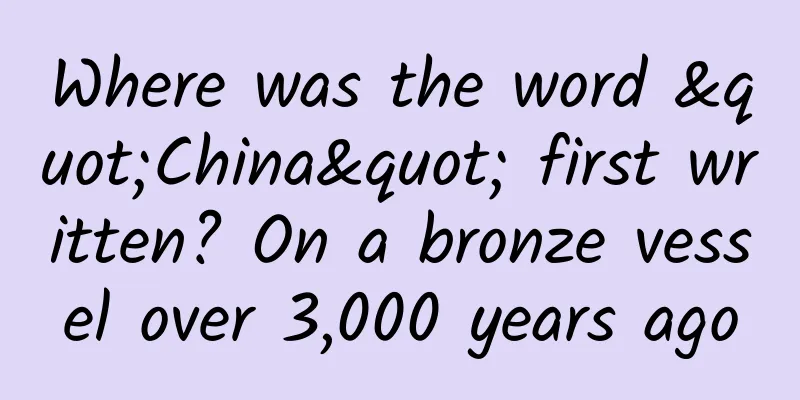Li Siguang: His light spread far and wide, and he was of great use to the country

|
Li Siguang was born in Huanggang, Hubei in October 1889. He was a famous geologist, educator and social activist in my country. He discovered the remains of Quaternary glaciers, laying the foundation for Quaternary geology, geography and climate; he created geological mechanics, discovered Daqing and other oil fields and a series of uranium deposits, removed the label of "oil-poor" in New China, and made contributions to my country's atomic energy industry... He pursued scientific truth, embraced the motherland, devoted his loyalty to the motherland he loved, and struggled all his life. Hubei Huanggang Li Siguang Memorial Hall In Huangzhou, the Li Siguang Memorial Hall has become a landmark building, an important popular science propaganda base and tourist attraction in Huanggang City and the entire eastern Hubei region. It is adjacent to the Dongpo Chibi Scenic Area and opened on the centenary of Mr. Li's birth. The museum displays more than 2,000 precious exhibits, focusing on Mr. Li Siguang's scientific and technological achievements, and focusing on promoting scientific and technological knowledge closely related to life such as geology, energy, and earthquakes. Scene inside the Huanggang Li Siguang Memorial Hall The Li Siguang Memorial Square was newly built in 2007, with a full-length bronze statue of Li Siguang standing in the center of the square His name comes from a "mistake". Li Siguang, whose original name was Li Zhongkui, applied for the Hubei Second High School at the age of 14. When filling out the application form, he mistakenly wrote "fourteen" in the name column for his age. He was reluctant to buy another application form, so he added a stroke to "ten" and changed it to "Li". He also took the "Guang" from the large plaque "Guang Bei Si Biao" hanging in the hall as the last character of his name. In this way, the 14-year-old "Li Siguang" was admitted to the school, starting his life of aspiring to become a talent and save the country through science. Former Office Site of Mr. Li Siguang and History Museum of Nanjing Institute of Geology and Paleontology, Chinese Academy of Sciences Li Siguang was the first director of the Nanjing Institute of Geology and Paleontology, Chinese Academy of Sciences. The core site of the Nanjing Institute of Paleontology's Scientist Spirit Education Base is the "Former Office of Mr. Li Siguang and Nanjing Institute of Paleontology History Museum" located in the Li Siguang Building of Nanjing Institute of Paleontology (former site of the Institute of Geology, Academia Sinica). The peripheral sites also include Li Siguang's former residence, the State Key Laboratory of Modern Paleontology and Stratigraphy, Nanjing Paleontology Museum, etc. Through historical materials, physical scenes, video interactions, etc., with the explanation of full-time and part-time staff, the spirit of Li Siguang and the ancient spirit of Nangu formed in his inheritance are displayed to the whole society. The exterior view of Mr. Li Siguang's former office and the History Museum of Nanjing Institute of Paleontology Mr. Li Siguang's former office When the news of the victory of the Liaoshen Campaign came, Li Siguang was recuperating in the UK. He immediately booked a cargo ship ticket to return home. While waiting for a visa for nearly a year, he kept in touch with his colleagues at the Nanjing Institute of Geology, supporting them in staying in Nanjing and opposing relocation, thus retaining a team and equipment for the geological science cause of New China. In view of Li Siguang's scientific achievements and great reputation in the international geological community, the Kuomintang tried its best to prevent him from returning to New China. Because of concerns about the safety of Li Siguang and his wife, Premier Zhou Enlai personally arranged for their return. The couple traveled to France, Switzerland, and Italy, and finally set foot on the land of New China via Hong Kong in April 1950. Li Siguang Memorial Hall (Beijing) Li Siguang moved here in 1962. This is a residence built by the state specifically for him. On the 100th anniversary of his birth (1989), it was opened as the Li Siguang Memorial Hall. Exterior view of Li Siguang Memorial Hall Exhibits in the Li Siguang Memorial Hall The museum displays the furniture and office supplies he used during his lifetime. It is worth mentioning that Li Siguang had a deep foundation in Chinese studies and a profound musical attainment, especially in the violin. In 1920, he wrote a violin piece "Hard to Travel" in Paris, which was the first violin piece created by a Chinese. It was first publicly performed at the Peking University Centennial Celebration Gala nearly 80 years later. This piece of music and the violin that Li Siguang often played abroad are both displayed in the memorial hall. When Li Siguang and his wife were alive, they were the only ones living in this small building. After they passed away, their daughter Li Lin and her family moved in. Li Lin (physicist, academician of the Chinese Academy of Sciences) passed away in 2002, and her husband Zou Chenglu (biochemist, academician of the Chinese Academy of Sciences) passed away in 2006. Three academicians from one family has become a good story. (Guangming Daily trainee reporter Zhang Xiaohua) |
<<: This murderous thing is so close to you...
>>: Be careful if you have such "blackheads" around your nose, as they may be skin cancer!
Recommend
It's time to defend the potato! We've been so misunderstood about it...
Compiled by: Gong Zixin Potatoes are high in star...
The efficacy and function of Eupatorium chinense leaves
There are many kinds of common Chinese medicinal ...
What is the mystery behind this little-known "cat special forces soldier"?
Recently, an infrared camera at the Dagu Glacier ...
The smiley face symbol was sold at a sky-high price of over 2.5 million. Why is NFT so valuable?
Let me first show you some priceless works of art...
The impact of Typhoon Trami continues! How to deal with the "hitting the bull from behind the mountain" type of rainfall?
Typhoon Trami weakened to a severe tropical storm...
What are the Chinese medicines?
We all know that when a disease occurs in the bod...
Putting this kind of film on your phone will really ruin your eyes... Urgent reminder →
A user posted that after using a privacy film in ...
Are frost and frost the same thing? Here are 7 tips to deal with frost!
Today is Frost Descent, the eighteenth of the twe...
Nosto: Fashion E-commerce Report 2019
According to a new report from Nosto, “Fashion E-...
ECDB: Global E-commerce Market in 2024
The global e-commerce market will reach $5.14 tri...
The efficacy and function of hanging fruit
Diseases require improvement through medicine. Di...
Fried chicken with cola = high fat and high sugar? Research proves: heavy casualties of pancreatic islet cells!
When eating fried chicken, you must drink Coke! I...
Can I eat ginseng if I have liver cirrhosis?
The incidence of liver cirrhosis is actually gett...
The efficacy and function of Torreya grandis
Torreya grandis is something that many people are...









